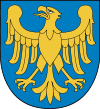Katowice
| Katowice | |||
|
|
|||
|
|||
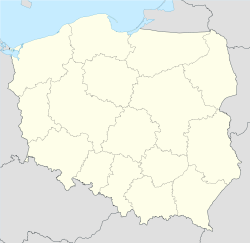 Katowice
|
|||
| Coordinates: | |||
| Country | |||
|---|---|---|---|
| Voivodeship | |||
| County | city county | ||
| Established | 16th century | ||
| City rights | 1865 | ||
| Government | |||
| - Mayor | Piotr Uszok | ||
| Area | |||
| - City | 164.67 km² (63.6 sq mi) | ||
| Highest elevation | 352 m (1,155 ft) | ||
| Lowest elevation | 266 m (873 ft) | ||
| Population (2007) | |||
| - City | 317,220 | ||
| - Density | 1,926.4/km² (4,989.3/sq mi) | ||
| - Metro | 3,500,000 | ||
| Time zone | CET (UTC+1) | ||
| - Summer (DST) | CEST (UTC+2) | ||
| Postal code | 40-001 to 40-999 | ||
| Area code(s) | +48 32 | ||
| Car plates | SK | ||
| Website: http://www.um.katowice.pl/ | |||
Katowice [katɔˈvʲit͡sɛ] (![]() listen) (Czech: Katovice, German: Kattowitz) is a city in Silesia in southern Poland, on the Kłodnica and Rawa rivers (tributaries of the Oder and the Vistula). Katowice is located in the Silesian Highlands, about 50 km from the Silesian Beskids (part of the Carpathian Mountains) and about 100 km from Sudetes Mountains.
listen) (Czech: Katovice, German: Kattowitz) is a city in Silesia in southern Poland, on the Kłodnica and Rawa rivers (tributaries of the Oder and the Vistula). Katowice is located in the Silesian Highlands, about 50 km from the Silesian Beskids (part of the Carpathian Mountains) and about 100 km from Sudetes Mountains.
Katowice has been the capital of Silesian Voivodeship since its formation in 1999. Previously, it was the capital of the Katowice Voivodeship, and before then, of the Autonomous Silesian Voivodeship. Katowice is the main city of the Upper Silesian Industry Area and the central district of the Upper Silesian Metropolitan Union. Its population is 317,220 (2006), within a greater urban area populated by about 3.5 million people.
Contents |
History
-
For more details on this topic, see History of Katowice.
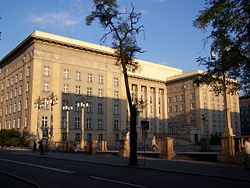
The area around Katowice in Upper Silesia has been inhabited by ethnic Silesians from its earliest documented history. It was first ruled by the Polish Silesian Piast dynasty (until its extinction). From 1335 it was a part of the Crown of Bohemia. In 1526 the territory passed to the Austrian Habsburg Monarchy after the death of King Louis II of Hungary and Bohemia. In 1742 most of Silesia was annexed from Austria by the Kingdom of Prussia during the First Silesian War.
Katowice was founded in the 19th century and gained city status in 1865 as Kattowitz in the Prussian Province of Silesia. The city flourished due to large mineral (especially coal) deposits in the nearby mountains. Extensive city growth and prosperity depended on the coal mining and steel industries, which took off during the Industrial Revolution. Kattowitz was inhabited mainly by Germans, Silesians, Jews and Poles. Previously part of the Beuthen district, in 1873 it became the capital of the new Kattowitz district. On 1 April 1899, the city of Kattowitz was separated from the district, becoming an independent city.
Following the Silesian Uprisings (1918-21) Katowice became part of the Second Polish Republic with a certain level of autonomy (Silesian Parliament as a constituency and Silesian Voivodeship Council as the executive body).

In 1953 the city was renamed Stalinogród ("Stalin City") by the Polish communist government. However, the new name was never accepted by the city's population and in 1956 the former name of 'Katowice' was restored.
Severe ecological damage to the environment occurred during the post-Second World War time of communist governance in the People's Republic of Poland, but recent changes in regulations, procedures and policies of Polish government since the fall of Communism have reversed much of the harm that was done.
Due to economic reforms, there has been a shift away from heavy industry, and towards small businesses.
Geography
Location
In administrative terms, Katowice is an urban community in the eastern part of Upper Silesia, now in Silesian Voivodeship in south-west Poland, within the central portion of the Upper Silesian Coal Basin. It borders the towns of Chorzów, Siemianowice Śląskie, Sosnowiec, Mysłowice, Lędziny, Tychy, Mikołów, Ruda Śląska and Czeladź. In geographical terms, it lies between the Vistula and Oder rivers, on the Silesian Highlands. Several rivers flow through the city, the major two being the Kłodnica and Rawa Rivers. Within 600 kilometres of Katowice are the capital cities of six countries: Berlin, Vienna, Prague, Bratislava, Budapest and Warsaw.
Climate
The climate of the area is continental humid. The average temperature is 8 degrees Celsius (average -1.7°C in January and up to average 17.7°C in July). Yearly rainfall averages at 750 mm, the most rainy month being July. The area's characterisitc weak winds blow at about 2 m/s from from the west (Moravian Gate).
Districts
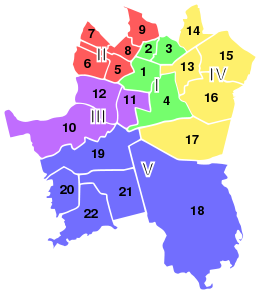
|
I. City
II. North-Town
III. West-Town
|
IV. East-Town
V. South-Town
|
Agglomeration

Katowice lies in the center of the largest agglomeration in Poland and is one of the largest in the European Union, numbering at about 3.5 million. This urban expansion bloomed in the 19th century thanks to the rapid development of the mining and metallurgical industries. The greater Katowice area (including the Upper Silesian Industrial Region consists of about 25 neighbouring cities. However, the whole metropolitan area (encompassing the Upper Silesian Coal Basin) consists of over 30 cities. Katowice is also part of a megalopolis of over 7 million inhabitants covering Cracow, Katowice and Ostrava regions.
In the year 2006 Katowice and 14 neighboring cities united under one municipal organism - the union of cities - Upper Silesian Metropolitan Union. Its population is 2 million and its area is 1,304 km². In 2006 and 2007, the union planned to unite these cities in one city under the name "Silesia"; however, this proved unsuccessful[1].
Culture
Theater
- Silesian Theater
- Ateneum Theater
- Korez Theater
- Cogitatur Theater
- Rialto Cinetheater
Cinema
- IMAX Katowice
- Cinema City - Punkt rozrywki 44 ( 13 halls )
- Cinema City - Silesia City Center ( 13 halls )
- Helios Cinema Center ( 9 halls )
- Światowid Cinema ( 1 halls )
- Rialto Cinetheater ( 1 halls )
- Cinematographic Arts Center ( 2 halls )
Music
- Silesian Philharmonic
- Silesian Estrade
- Scene GuGalander
- Mega Club
- National Symphonic Orchestra of Polish Radio
Museum

- Silesian Museum
- History of Katowice Museum
- Muzeum Archidiecezjalne
- Muzeum Misyjne OO. Franciszkanów
- Muzeum Biograficzne P. Stellera
- Muzeum Prawa i Prawników Polskich
- Muzeum Najmniejszych Książek Świata Zygmunta Szkocnego
- Izba Śląska
- Centre of Polish Scenography
- Silesian center of refreshment and culture
Media
- TV stations:
- TVP 3 Katowice
- TVS (TV Silesia)
- TVN24 - department Katowice (TVN24 - oddział Katowice)
- radio stations:
- Radio Katowice
- Radio Roxy FM
- Radio Planeta
- Antyradio
- Radio Eska
- newspapers:
- Dziennik Zachodni
- Gazeta Wyborcza - Katowice section
- Fakt - Katowice section
- Echo Miasta
- Metro International - Katowice
- Nowy Przegląd Katowicki
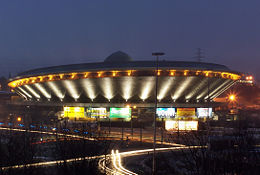
Festivals and Events
- Rawa Blues Festiwal - Spodek
- Metalmania - Spodek
- Mayday - Spodek
- International Competition of Conductors by Fitelberg
- International Festival of Military Orchestras
- International Exhibition of Graphic arts "Intergrafia"
- The all-Polish Festival of the Director's Art the "Interpretations"
- Ars Cameralis Silesiae Superioris
Art Galleries
- Galeria Sztuki Współczesnej BWA Al. Korfantego 6
- Galeria Sztuki Współczesnej Parnas ul. Kochanowskiego 10
- Galeria Sztuki Atelier 2 ul. Batorego 2
- Galeria Związku Polskich Artystów Plastyków ul. Dworcowa 13
- Galeria Architektury SARP ul. Dyrekcyjna 9
- Galeria Art-Deco pl. Andrzeja 4
- Galeria Fra Angelico ul. Jordana 39
- Galeria Akwarela ul. Mikołowska 26
- Galeria Marmurowa ul. Mikołowska 26
- Galeria Piętro Wyżej
- Galeria Sektor I
- Galeria Szyb Wilson
Parks & Squares

- Main parks:
- Silesian culture and refreshment park (Wojewódzki Park Kultury i Wypoczynku)
- Tadeusz Kościuszko Park (Park im. Tadeusza Kościuszki)
- Forest Park of Katowice (Katowicki Park Leśny)
- Valley Three Ponds (Dolina Trzech Stawów)
- Zadole Park
- Bolina Park
- Janina-Barbara Park
- Olympic Participants' Park (Park Olimpijczyków)
- Murckowska Valley
- Square:
- Wolność Square (Plac Wolności)
- Andrzej Square (Plac Andrzeja)
- Miarka Square (Plac Miarki)
- Council of Europe Square (Plac Rady Europy)
- Alfred Square (Plac Alfreda)
- A. Budniok Square (Plac A. Brudnioka)
- J. Londzin Square (Plac J. Londzina)
- A. Hlond Square (Plac A. Hlonda)
Nature reserves and ecological area
- Nature reserve Las Murckowski
- Nature reserve Ochojec
- Szopienice-Borki
- Źródła Kłodnicy
- Staw Grunfeld
- Stawy Na Tysiącleciu
- Płone Bagno
Architecture
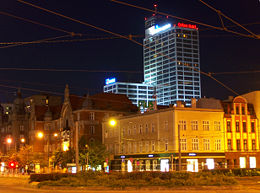
Examples of Modernism (International Style and Bauhaus inspired architecture) may be found in the city downtown. Central Katowice also contain a significant number of Art Nouveau (Secesja) buildings along with the Communist Era giants such as Spodek or Superjednostka.
Katowice's Rynek is the old centre and marketplace of the city. Unfortunately many old buildings were demolished in the 1950s to make space for monumental communist modern buildings.
Several streets around the Rynek and the Rynek itself are now closed to traffic and have been made into a shopping promenades.
Regeneration of the Rynek area should start at 2007-2008 and there was an international architectural competition in 2006 to find the best design.
Best buildings and places to see in Katowice:
- Cathedral in Katowice
- Drapacz Chmur, one of the first skyscrapers in Europe
- St. Mary's Church in Katowice
- St. Stephen's Church
- Church of St. Michael Archangel
- Church of Christ Resurrection in Katowice
- Silesian Parliament
- Market square in Katowice
- Katowice Rondo - is the large square/roundabout, which was reconstructed recently, featuring the semi circular Galeria Rondo Sztuki in the centre.
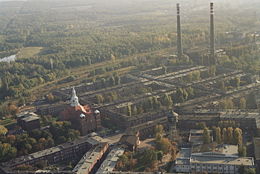
- Silesian Insurgents Monument (Polish: Pomnik Powstańców Śląskich), situated next to Rondo, is a large monument dedicated to the memory of the Silesian Uprisings of early 1920s
- The Spodek is a large sports centre/concert hall, whose name translates as the 'saucer', from its distinctive shape resembling a UFO flying saucer.
- Katowice Central Station - the main Katowice train station is a large, distinctive concrete building from Seventies near the Rynek. There are plans to raze and rebuild it after the reconstruction of the Rondo and Rynek.
- Old train station in Katowice
- Monopol Hotel in Katowice
- The Goldstein Palace
- The Załęże Palace
- Nikiszowiec - historical settlement of Katowice, candidate to UNESCO
- Silesian Theatre
- Rialto Cinetheater
- Parachute Tower Katowice
- The Altus Skyscraper, tallest City skyscraper.
Economy
Industry
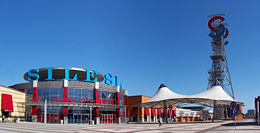
Katowice is a large coal and steel centre. It has several coal mines (Wujek Coal Mine, Mysłowice-Wesoła Coal Mine, Wieczorek Coal Mine, Murcki Coal Mine, Staszic Coal Mine) organized into unions - Katowice Coal Holding company (pl: Katowicki Holding Węglowy), two steelworks (Huta Baildon, Huta Ferum), and one foundry of non-ferrous metals (Huta Metali Nieżelaznych Szopienice).
Business and commerce
Katowice is also a large business and trade fair centre. Every year in Katowice International Fair and Spodek, tens of international trade fairs are organized. Katowice has the second largest business centre in Poland (after Warsaw Business Centre). Skyscrapers stand along Chorzowska, Korfantego and Roździeńskiego street in the centre of the city. The newest office buildings (A-class) in Katowice are the Chorzowska 50, Altus Skyscraper and Silesia Towers (under construction).
General
Katowice is the seat of Katowice Special Economic Zone (Katowicka Specjalna Strefa Ekonomiczna).
The unemployment rate in Katowice is one of the lowest in Poland, at 2% (in 2008), according to the official figures[2]. The city is still characterized by its working class strength and thus attracts many people seeking jobs from neighbouring cities (other districts USMU).
The average monthly salary in Katowice is the highest in Poland - about 3950 zlotych($~1,900), in Warsaw it's about 3500 zlotychs($~1,700).
Education
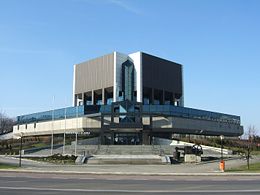
Katowice is the third largest scientific centre in Poland (after Warsaw and Cracow). It has over 20 schools of higher education, at which over 100,000 persons study.
- University of Silesia
- University of Economics in Katowice
- University of Music in Katowice
- University of Sports in Katowice
- University of Arts in Katowice
- University of Arts in Cracow (department in Katowice)
- Medical University of Silesia
- Silesian University of Technology - Faculty of Materials Science and Metallurgy and Transport
- Polish Academy of Sciences
- International Higher School of Political Sciences in Katowice
- International Higher School of Banking and Finances in Katowice
- Silesian International Business Higher School in Katowice
- Silesian Higher School of Computer science in Katowice
- Silesian Higher School of Management in Katowice
- Uppersilesian Higher School of Trade in Katowice
- Higher School of Banking and Finances in Katowice
- Higher School of Humanistic Science in Katowice
- Higher School of Technical Science in Katowice
- Higher School of Computer Technologies in Katowice
- Higher School the Pedagogical TWP in Warsaw, the Institute of Pedagogy in Katowice
- Higher School of Social Skills in Poznań (department in Katowice)
- Higher School of Humanistic - Economic in Łódź (department in Katowice)
- Higher School of Marketing Management and Foreign Languages in Katowice
- Higher School of Management the Protection of Work in Katowice
- Silesian Higher Clerical Seminar in Katowice
- Theological Seminar of Smaller Brothers in Katowice
- Private Teacher's College of Foreign Languages in Katowice
- Private Teacher's Board of Foreign Languages in Bielsko (department in Katowice)
There are also:
- around 80 high schools
- around 35 gimnasia
- around 55 primary schools
- around 50 libraries, including the Silesian Library
Transport
Public Transport
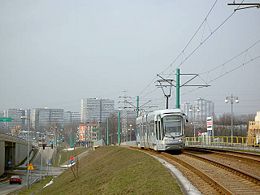
The public transportation system of the Katowice and Upper Silesian Metropolitan Union consists of four branches - buses, trams, trolleybuses and the regional rail united in the KZK GOP. Additional services are operated by private companies and the state-owned railways.
- Trams
Silesian Interurbans - one of the largest tram systems in the World, in existence since 1894. The system spreads for more than 50 kilometres (east-west) and covers fourteen districts of the Upper Silesian Metropolitan Union.
Roads
- European route E40 (France - Belgium - Germany - Katowice - Ukraine - Russia - Uzbekistan - Kazakhstan)
- European route E75 (Vardø, Norway - Finland - Katowice - Slovakia - Hungary - Serbia - Macedonia - Crete, Greece)
- European route E462 (Czech Republic - Katowice)
- Motorway A4 (Germany - Katowice - Ukraine)
- DK1 National Road
- DK79 National Road
- DK81 National Road
- DK86 National Road
Several important roads in neighbourhoods of Katowice (USMU):
- Motorway A1 (Czech - Katowice - Tricity / Baltic Sea)
- DK11 National Road
- DK44 National Road
- DK78 National Road
- DK88 National Road
- DK94 National Road
Airports
The city and the area is served by the Katowice International Airport, located about 30 km from the center of Katowice. With over 20 international and domestic flights daily, it is by far the biggest airport in Silesia (~2 million passengers served in 2007; 2 terminals: A and B).
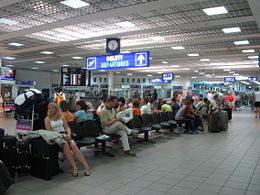
Because of the long commute to the airport, there is a proposal to convert the much nearer sport aviation-serving Katowice-Muchowiec Airport into a so-called city airport, a second international airport for smaller, business-oriented traffic.
Railway
- Standard gauge railway
The first railroad reached this area in 1846 (the Upper Silesia Railway, in Polish: Kolej Górnośląska; in German: Oberschlesische Eisenbahn). Nowadays Katowice is one of the main railway nodes and exchange points in Silesia and in Poland. Cheap and fairly efficient, the Polskie Koleje Państwowe (Polish State-Owned Railways) in the area of the proposed union constitute one of the main transport hubs in Poland (the most important one being Warsaw). The main railroad station is Katowice Central Station. Both the domestic and the international connections run from there to almost every major city in Poland and Europe.
- Broad gauge railway
Linia Hutnicza Szerokotorowa (known by its acronym LHS, English: Broad gauge metallurgy line) is the longest broad gauge railway line in Poland. Except for this one line, and a few very short stretches near border crossings, Poland uses the standard gauge for its railways, unlike Russia and the other former countries of the Soviet Union. The line runs on a single track for almost 400 km from the Polish-Ukrainian border, crossing it just east of Hrubieszów, to Sławków (one of the suburbs of the proposed union). It is used only for freight transport, mainly iron ore and coal. It is the westernmost broad gauge railway line in Europe that is connected to the broad gauge rail system of the countries which before 1991 constituted the Soviet Union. The line is managed by PKP Linia Hutnicza Szerokotorowa Spólka z o.o. company. Previous name of this line was Linia Hutniczo Siarkowa (English: Metallurgy - Sulfur Line), but after sulfur ceased to be transported on the line its name was changed.
Water Transport
Katowice also has several canals, including the Gliwice Canal (pl:Kanal Gliwicki) which links Gliwice Harbour to the Oder River and thus to the waterway network across much of Germany and to the Baltic Sea.
Kłodnica Canal (pl: Kanal Klodnicki) is no longer used to transport goods, but it is popular with leisure cruisers.
Sports
- GKS Katowice - men's football, (Polish Cup winner: 1986, 1991, 1993; Polish SuperCup winner: 1991, 1995; 1st league in 2003/2004 and 2004/2005 seasons). ice hockey team Champion :1958,1960,1962 Gòrnik Katowice / GKS 1965,1968,1970.
- 1. FC Kattowitz - football club, vice-champion in Poland: 1927; champion in Upper Silesia: 1907, 1908, 1909, 1913, 1922, 1945; 3 place in championships of south-east Germanys: 1922
- AZS AWF Katowice - women's handball team playing in Polish Ekstraklasa Women's Handball League: 11th place in 2003/2004 season; will play in the 1st league in 2004/2005 season.
- KS Rozwój Katowice - football club
- MK Katowice - football club
- Kolejarz Katowice - football club
- Podlesianka Katowice - football club
- AZS US Katowice - various sports
- Naprzód Janów Katowice - hockey club
- HKS Szopienice - various sports
- Hetman Katowice - football club
- Hetman Szopienice - chess club
- MAKS Murcki Katowice - ice hockey & netball club
- Sparta Katowice - various sports
- HC GKS Katowice - hockey club
- AWF Mickiewicz Katowice - basketball club
- Silesia Miners - American football club
Discontinued sports clubs:
- Diana Kattowitz - football club
- Germania Kattowitz - football club
- EKS Kattowitz - watersports club
- Dąb Katowice - various sports
- Pogoń Katowice - various sports
- KS Baildon Katowice - various sports
- Centrum Body Club Katowice - bodybuilding club
Notable residents
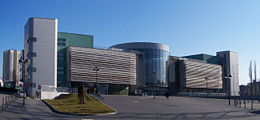
- Hans Sachs (1877-1945), serologist
- Kurt Goldstein (1878-1965), neurologist
- Franz Leopold Neumann (1900-1954), politician
- Hans Bellmer (1902-1975), surrealist photographer
- Maria Goeppert-Mayer (1906-1972), physicist
- Chaskel Besser (born 1923), Orthodox rabbi
- Kazimierz Kutz (born 1929), film director and politician
- Wojciech Kilar (born 1932), classical and film music composer
- Henryk Górecki (born 1933), classical composer
- Henryk Broder (born 1946), journalist
- Jerzy Kukuczka (1948-1989), alpine and high altitude climber
- Alexander Ulfig (born 1962), philosopher and sociologist
Twinned towns
Katowice is twinned with:
 Cologne, Germany
Cologne, Germany Groningen, Netherlands
Groningen, Netherlands Miskolc, Hungary
Miskolc, Hungary Mobile, United States
Mobile, United States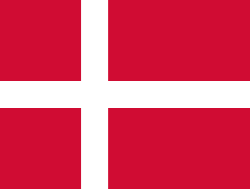 Odense, Denmark
Odense, Denmark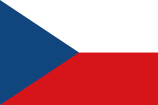 Ostrava, Czech Republic
Ostrava, Czech Republic Saint-Etienne, France
Saint-Etienne, France Saint Francis, United States
Saint Francis, United States
See also
- Tall buildings in Katowice
- List of mayors of Katowice
External links
- The Municipal Council of Katowice
- Silesia Community
- Katowice travel guide from Wikitravel
- Silesia Travel Guide
- The Commercial Website of Katowice
- Katowice, Silesia
- Architectural map of Katowice/Kattowitz
- A webcam view of Katowice
- Trams in Katowice
- "My City" association
References
- ↑ (Polish) dziennik.pl - "17 śląskich miast chce się połączyć w Silesię", 11 December 2006)
- ↑ [http://www.stat.gov.pl/gus/45_1487_PLK_HTML.htm Bezrobotni oraz stopa bezrobocia wg województw, podregionów i powiatów (stan w końcu lipca 2008 r.)
|
|||||||
|
||||||||||

